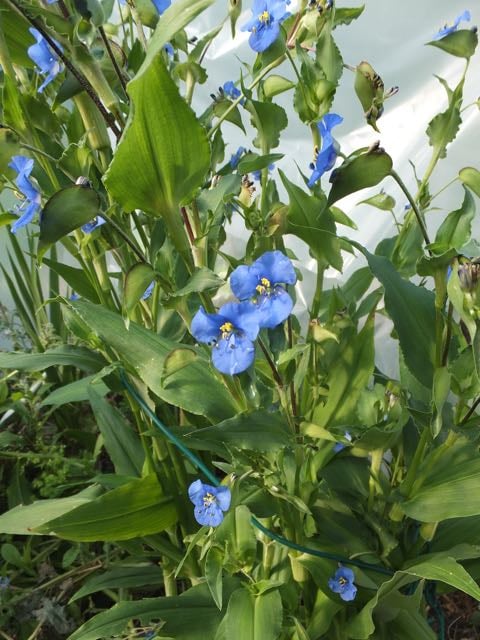
With gorgeous sky blue flowers all of summer the Blue Spider-wort is an ideal plant for a cool greenhouse. True it’s a tad lax and can flop if not supported and the waist high stems of lanceolate leaves are not exactly stunning. However continuous displays of gentian blue flowers redeems all.
As these lovely blooms face the morning sun situate these plants on the north or west side of your greenhouse or conservatory so you enjoy the full effect. Perhaps tucked behind another squatter subject to hide their lower parts. And you have to be there in the mornings as the flowers wither away during the day to be replaced the next dawn by more blooms popping out from each strange pointed pear shaped pod.
Originally from Mexico and introduced in 1732 there’s a hundred or more species of Commelina spider-worts most of which are tender clamberers with blue flowers however none are as obliging and dependable as C. tuberosa.
An easy subject to look after this near hardy herbaceous perennial has a tuberous root that can be divided in spring. Or you can grow this from seed to flower the first year without much difficulty and then over-winter the tubers for even better shows following years. Although the standard blue is gorgeous enough breeders have introduced white and pale lilac varieties as well.
These grow well in a mixture of John Innes potting (2 or 3) with extra leaf mould, or a multi-purpose mixed 50:50with loam and leaf mould. A large tub is useful as much for stability as for the root balls as these plants are top heavy and like canes and ties to keep them upright.
Other than the odd snail and slug this plant is seldom attacked by pests or diseases. Light feeding throughout the growing season helps, just add liquid feed regularly to their water (rain is ideal but tap is acceptable).
And if times get hard and you become desperate enough apparently the roots of many species have been eaten in the past though I can’t say these look or smell very appetising. Just grow these for the flowers.
PS, the name has a touching origin by Linnaeus “Commelina has flowers with three petals, two of which are showy, while the third is not conspicuous, from the two botanists Commelin, for the third died before accomplishing anything”.


